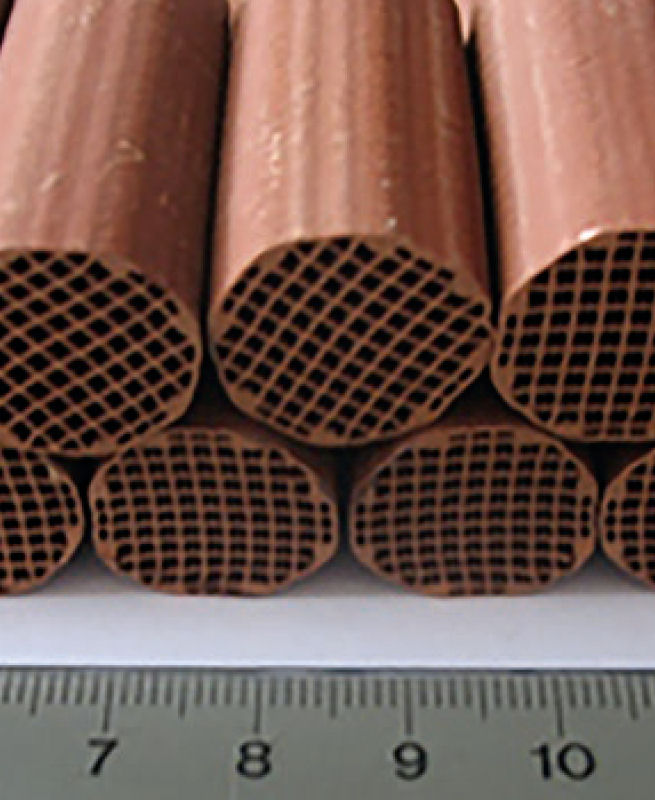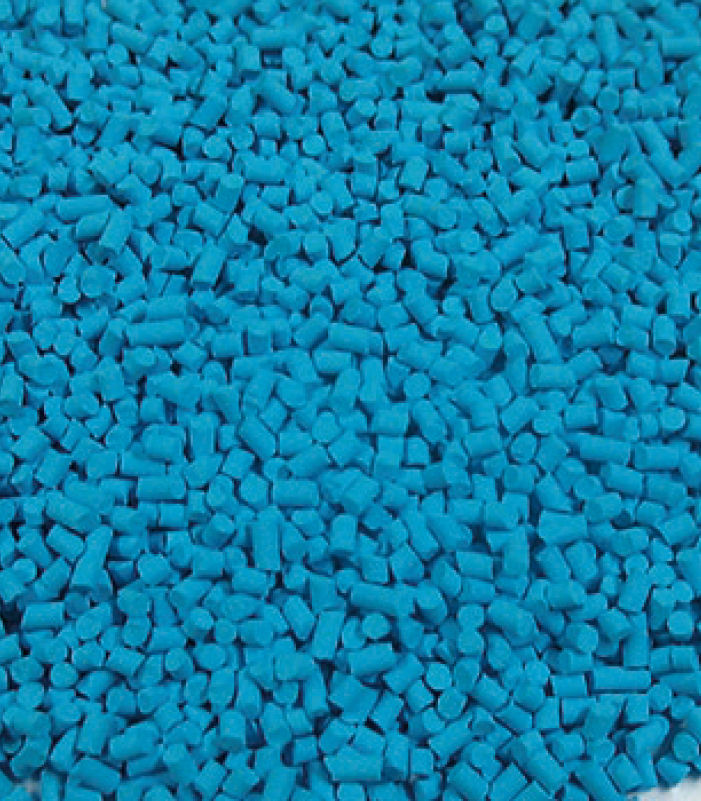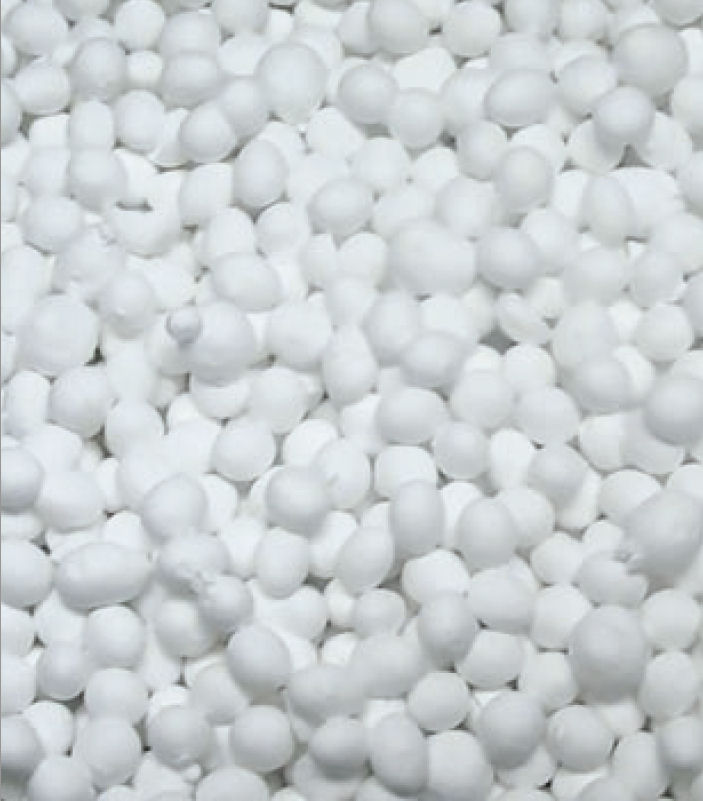


Metal-organic frameworks – MOFs – are a new class of porous materials characterized by high specific surface areas and pore volumes and, thus, outstanding gas storage properties. The three-dimensional MOF networks consist of metal clusters and organic linker molecules. Other molecules can be “stored” in the intermediate spaces. Selecting appropriate raw materials provides a variety in composition and structure of MOFs, which allows for targeted properties tailored to specific applications.
The shaping of MOF powders to formed bodies plays a key role for opening up the excellent material properties of MOFs to a broad range of applications. Fraunhofer IKTS has succeeded in developing application-specific MOF bodies, such as pellets, granules or monolithic honeycomb and foam structures through various powder-technological shaping and granulation methods, such as extrusion, dry pressing, freeze-casting, freeze-granulation and freeze-foaming. These can be used, for instance, in gas storage systems, in heat pumps or as catalyst support. IKTS has been successfully contributing its expertise in the powdertechnological shaping of MOFs in a number of projects (Fraunhofer-internal project ”MOF2market“, EU project ”MATESA“ – Grant Agreement 608534) since 2012. Current projects include “ProDIA” (Grant Agreement 685727) and “H-CCAT” (Grant Agreement 720996) – both funded by the EU – as well as ”MOFSchutz“, funded by the German Federal Ministry of Eduction and Research, BMBF (grant number 13N14194). These ongoing projects assess the influence of process parameters and binder components on the specific surface area and application-relevant performance (e.g. in terms of NH3 adsorption, CH4 storage, H2O adsorption). The specific shaping processes are adapted and optimized accordingly. Various MOF powders like e.g. HKUST-1, Fe- BTC, Al-Fumarate, UiO-66, CPO-27(Ni), CAU-10 or PCN-250, which had been synthesized by project partners, were processed to granules, pellets or monolithic parts. With regard to those MOF parts, next to obtaining mechanically stable components, the challenge was to retain as much of the initial properties of the MOF material as possible. The necessary usage of binder components and/or the shear forces occurring in shaping processes (e.g. extrusion, compression) can have negative effects on the porosity or the specific surface area and, thus, the application properties (e.g. storage capacity) of the MOF. Extruded HKUST-1 pellets yielded particularly good results, with surface areas between 83 % and 100 % the size of the raw material (1460 m²/g), depending on processing and binder. PCN-250 pellets reached between 72 % and 77 %. For other MOF bodies obtained through pressing, freeze-granulation, freeze-casting or freeze-foaming, these values are in the range between 55 % and 95 % compared with the raw material. Using the adapted shaping processes and shaped body compositions, it is possible to utilize MOFs with their excellent material properties for various applications.